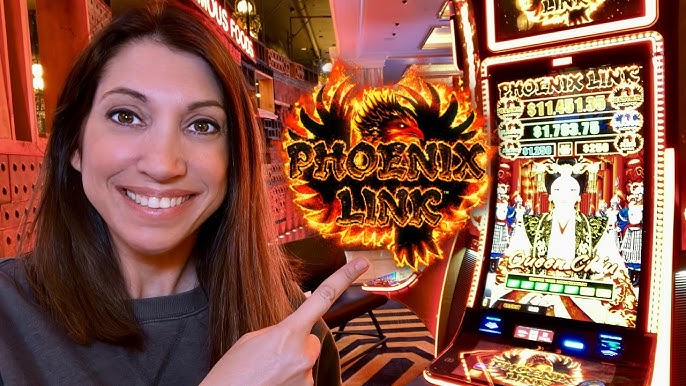The Fascinating World of Slot Machines: A Journey Through History and Innovation
Slot machines, often referred to as “one-armed bandits,” are a cornerstone of the gambling world. From their humble beginnings in the late 19th century to their modern digital incarnations, slot machines have captivated players with their promise of luck, entertainment, and the allure of instant wealth. This article delves into the history, mechanics, and innovations that have transformed link slot into one of the most popular forms of gaming worldwide.
A Brief History of Slot Machines
The story of slot machines begins in 1895 when Charles Fey, a San Francisco mechanic, invented the Liberty Bell. This mechanical marvel featured three spinning reels adorned with symbols such as horseshoes, diamonds, spades, and the Liberty Bell itself. Players would insert a coin, pull a lever, and watch the reels spin in hopes of aligning three matching symbols. A trio of Liberty Bells yielded the highest payout—50 cents.
Fey’s invention set the stage for a wave of slot machine development. In the early 20th century, manufacturers began producing machines with fruit symbols and bar icons, a design choice that endures to this day. These machines dispensed gum or candy as prizes to skirt anti-gambling laws, giving birth to the term “fruit machine.”
By the mid-20th century, the introduction of electromechanical machines, such as Bally’s iconic Money Honey in 1963, marked a turning point. These machines allowed for higher payouts and more sophisticated gameplay. The addition of flashing lights, sounds, and other features enhanced the sensory experience, drawing even more players to slot machines.
How Slot Machines Work
At their core, slot machines are games of chance. While the technology has evolved, the fundamental mechanics remain the same: players wager money, spin the reels, and hope for a winning combination. Modern slot machines use random number generators (RNGs), complex algorithms that ensure each spin is independent and unpredictable. This technology guarantees fairness and keeps players coming back for more.
The symbols on the reels are carefully designed to create excitement and anticipation. Winning combinations are programmed to occur at specific frequencies, creating a delicate balance between payouts and profitability for the casino. The “house edge,” the mathematical advantage casinos have over players, ensures that slot machines remain a lucrative source of revenue.
The Evolution of Slot Machines
The advent of digital technology in the late 20th century revolutionized the world of slot machines. Video slots, which replaced physical reels with digital displays, allowed for greater creativity in game design. Developers could now include intricate themes, bonus rounds, and storylines, transforming slots into immersive entertainment experiences.
In the 21st century, the rise of online casinos further expanded the reach of slot machines. Virtual slots, accessible on desktop computers and mobile devices, brought the thrill of the casino floor to players’ fingertips. Online slots offer a vast array of themes, from ancient Egypt to space exploration, catering to diverse tastes and preferences.
One of the most significant innovations in recent years is the advent of progressive jackpots. These games pool a portion of each wager into a growing prize, often reaching millions of dollars. The life-changing payouts of progressive slots, such as Microgaming’s Mega Moolah or NetEnt’s Mega Fortune, have made them immensely popular among players.
The Psychology Behind Slots
Slot machines are designed to engage players on multiple levels. Bright colors, flashing lights, and catchy sound effects create a sensory overload that keeps players entertained. The random nature of payouts, combined with the occasional big win, taps into the psychological phenomenon of “variable rewards.” This system, similar to what drives social media and mobile game addiction, keeps players spinning the reels in pursuit of the next payout.
Modern slot machines also use advanced analytics to personalize the gaming experience. Some machines adjust gameplay based on a player’s preferences, offering tailored bonuses or altering the pacing of spins to maximize engagement.
The Future of Slot Machines
As technology continues to advance, the future of slot machines looks more exciting than ever. Virtual reality (VR) and augmented reality (AR) are poised to redefine the way players interact with slots. Imagine stepping into a fully immersive casino environment, where you can pull virtual levers, interact with other players, and explore themed worlds—all from the comfort of your home.
Blockchain technology is also making its way into the world of slots, offering increased transparency and security. Crypto-based slots allow players to wager and win using cryptocurrencies like Bitcoin, Ethereum, and others, appealing to tech-savvy gamblers.
Finally, gamification elements, such as leaderboards, achievements, and social features, are becoming increasingly common in slot games. These additions create a sense of community and competition, enhancing the overall experience.
Conclusion
Slot machines have come a long way from their mechanical origins, evolving into sophisticated and highly entertaining games that attract millions of players worldwide. With a rich history, innovative technology, and the promise of life-changing jackpots, slots continue to be a central feature of the gambling industry. Whether you’re a casual player seeking fun or a high-stakes gambler chasing the thrill of a big win, the world of slot machines offers something for everyone. As technology pushes the boundaries of what’s possible, the future of slots promises to be even more exhilarating.

